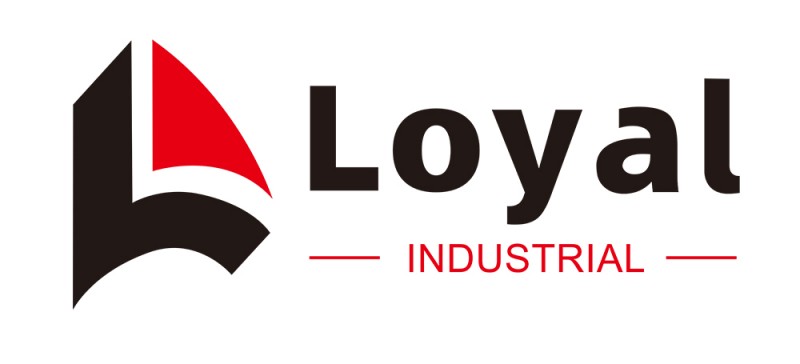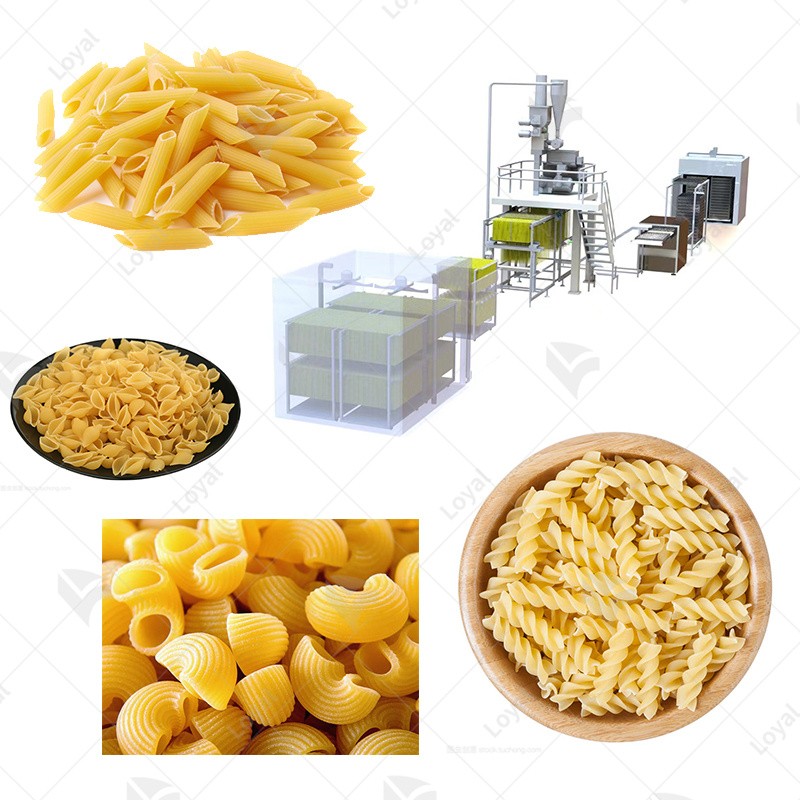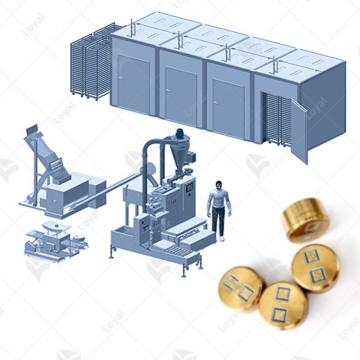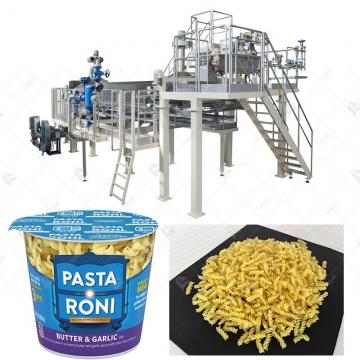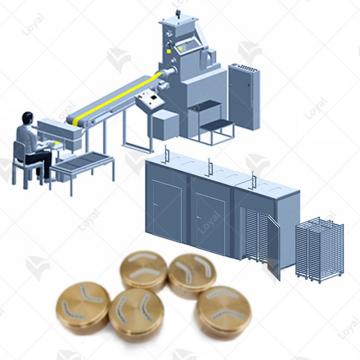Revolutionizing Pasta Manufacturing: Full Automation and High Energy Efficiency in Spaghetti Pasta Production Line
Revolutionizing Pasta Manufacturing: Full Automation and High Energy Efficiency in Spaghetti Pasta Production Line
Pasta manufacturing has witnessed remarkable advancements over the years, with the Spaghetti Pasta Production Line standing out as a pinnacle of innovation and efficiency. The industry has evolved from traditional methods to highly automated systems, revolutionizing the way pasta is produced and meeting the growing demand for high-quality products.Shandong Loyal Industrial Co., Ltd. has incorporated advanced technologies from BID and PDominioni in the production of its macaroni.
The evolution of Spaghetti Pasta Production has been marked by a transition towards fully automated processes. In the earlier stages, manual labor played a significant role in pasta production. However, with technological advancements, the integration of automated systems has become essential for meeting the market demands efficiently.
Full automation in the Spaghetti Pasta Production Line not only streamlines the manufacturing process but also enhances precision and consistency. The significance of incorporating high energy efficiency lies in minimizing environmental impact and reducing operational costs. In this era of sustainability, adopting advanced technologies becomes imperative for long-term success.

Full Automation in Spaghetti Pasta Production Line
Fully automated systems in the Spaghetti Pasta Production Line encompass the use of cutting-edge machinery and smart technologies. These systems eliminate the need for manual intervention, ensuring a seamless and error-free production process. From mixing and extrusion to drying and packaging, every step is meticulously controlled by automated mechanisms.
Leading pasta manufacturers such as Colavita, Garofalo, Whole Foods 365 Everyday Value, Jovial, DeLallo, and Faella have embraced full automation in their production lines. This implementation has not only increased production efficiency but has also set a benchmark for quality standards in the industry. The integration of automation ensures that each batch of pasta meets the highest standards of taste and texture.
The advantages of full automation extend beyond efficiency and quality. These systems contribute significantly to the reduction of production costs and labor requirements. Furthermore, the precise control offered by automated processes results in minimal product wastage, making it a financially prudent and environmentally responsible choice for manufacturers.
High Energy Efficiency in Pasta Production
Energy efficiency is a key consideration in modern Spaghetti Pasta Production. By optimizing energy consumption, manufacturers not only reduce their environmental footprint but also position themselves as responsible industry leaders. The importance of energy efficiency is emphasized in achieving sustainable production practices.
Incorporating innovations such as energy-efficient machinery, advanced heating and cooling systems, and sustainable packaging materials contributes to a greener pasta production process. Manufacturers are increasingly investing in renewable energy sources to power their operations, aligning with global efforts to combat climate change.
The Spaghetti Pasta Production Line's commitment to high energy efficiency aligns with broader sustainability goals. Reduced energy consumption directly translates to lower greenhouse gas emissions and resource conservation. Embracing sustainability not only benefits the environment but also enhances the brand image of pasta manufacturers.

Technological Features of the Spaghetti Pasta Production Line
The technological features of the Spaghetti Pasta Production Line include state-of-the-art machinery and equipment designed for precision and reliability. From automated mixers to advanced extruders, each component is engineered to deliver consistent results and minimize production variances.
Smart technologies, such as artificial intelligence (AI) and the Internet of Things (IoT), play a pivotal role in the Spaghetti Pasta Production Line. These technologies enable real-time monitoring and adjustments, ensuring that the production process is optimized for efficiency and quality.
The integration of advanced technologies not only enhances production speed but also ensures unparalleled quality. Automated systems maintain precise control over factors such as temperature, humidity, and ingredient ratios, resulting in a final product that meets or exceeds consumer expectations.
Case Studies
Case studies on leading pasta manufacturers reveal the success of implementing fully automated Spaghetti Pasta Production Lines. Companies that have embraced automation have experienced increased production capacities, improved product consistency, and enhanced overall operational efficiency.
Notable case studies showcase the significant energy savings achieved through the adoption of energy-efficient technologies. The reduction in energy consumption not only contributes to cost savings but also aligns with corporate sustainability objectives.
Real-world examples highlight how automated systems have enhanced efficiency in the Spaghetti Pasta Production Line. From streamlined production workflows to minimized downtime, these examples underscore the transformative impact of automation on the pasta manufacturing industry.
Challenges and Future Trends
Despite the numerous benefits, full automation in the Spaghetti Pasta Production Line comes with its set of challenges. Manufacturers face issues such as initial implementation costs, workforce adaptation, and potential technical glitches. Addressing these challenges requires strategic planning and continuous improvement efforts to ensure a smooth transition to automated processes.
The future of Spaghetti Pasta Production is marked by exciting trends that aim to further optimize processes. Emerging technologies, such as robotics and data analytics, are expected to play a crucial role in refining automation. Manufacturers are also exploring sustainable packaging solutions to align with evolving consumer preferences for eco-friendly products.
Anticipating future innovations in the Spaghetti Pasta Production Line involves staying abreast of technological advancements. Potential innovations may include enhanced AI capabilities for predictive maintenance, further improvements in energy-efficient machinery, and novel approaches to ingredient sourcing for a more sustainable production chain.
Conclusion
In conclusion, the integration of full automation and high energy efficiency in the Spaghetti Pasta Production Line represents a paradigm shift in the industry. Manufacturers who embrace these advancements benefit from increased efficiency, reduced environmental impact, and a competitive edge in the market.
The implications of this revolution extend beyond the present, shaping the future landscape of pasta manufacturing. Companies that prioritize sustainability, innovation, and efficiency are poised to lead the industry, setting new standards for quality and responsible production.
As we reflect on the journey of revolutionizing pasta manufacturing, it is evident that the Spaghetti Pasta Production Line's evolution is driven by a commitment to excellence. This revolution not only transforms processes but also paves the way for a more sustainable and technologically advanced future in the world of food production.

FAQs: Frequently Asked Questions about Spaghetti Pasta Production Line
1. What are the key features of a Spaghetti Pasta Production Line?
A Spaghetti Pasta Production Line incorporates fully automated systems, including advanced machinery and smart technologies. Key features include automated mixing, extrusion, drying, and packaging processes, ensuring precision and consistency in pasta production.
2. How do fully automated systems benefit Spaghetti Pasta Manufacturing?
Fully automated systems streamline the production process by eliminating manual intervention. This not only enhances efficiency but also ensures a higher level of quality and consistency in the final product.
3. Which pasta manufacturers have successfully implemented full automation?
Leading brands such as Colavita, Garofalo, Whole Foods 365 Everyday Value, Jovial, DeLallo, and Faella have successfully embraced full automation in their Spaghetti Pasta Production Lines. Their implementations serve as benchmarks for industry standards.
4. What is the significance of energy efficiency in pasta production?
Energy efficiency in pasta production is crucial for reducing environmental impact and operational costs. By optimizing energy consumption, manufacturers contribute to sustainability goals and position themselves as responsible industry leaders.
5. How can Spaghetti Pasta Production Lines address challenges in full automation?
Addressing challenges in full automation involves strategic planning to overcome initial implementation costs, workforce adaptation, and technical glitches. Continuous improvement efforts are essential for ensuring a smooth transition to automated processes.
6. What emerging trends can be expected in Spaghetti Pasta Production?
Emerging trends include the integration of robotics and data analytics for process optimization. Additionally, manufacturers are exploring sustainable packaging solutions to align with consumer preferences for eco-friendly products.
7. What innovations are on the horizon for the Spaghetti Pasta Production Line?
Anticipated innovations include enhanced AI capabilities for predictive maintenance, improvements in energy-efficient machinery, and novel approaches to ingredient sourcing for a more sustainable production chain.
8. How does the revolution in pasta manufacturing impact the industry's future?
The revolution in pasta manufacturing sets new standards for quality, sustainability, and efficiency. Companies prioritizing innovation and responsible production are well-positioned to lead the industry into a technologically advanced and sustainable future.
9. What role do case studies play in showcasing the success of automated systems?
Case studies highlight the success of automated systems by demonstrating increased production capacities, improved product consistency, and enhanced overall operational efficiency. They serve as practical examples of the transformative impact of automation in pasta manufacturing.
10. In conclusion, what is the key takeaway from the revolution in the Spaghetti Pasta Production Line?
The key takeaway is that the integration of full automation and high energy efficiency represents a significant advancement in pasta manufacturing. This revolution not only transforms processes but also shapes a more sustainable and technologically advanced future for the industry.
